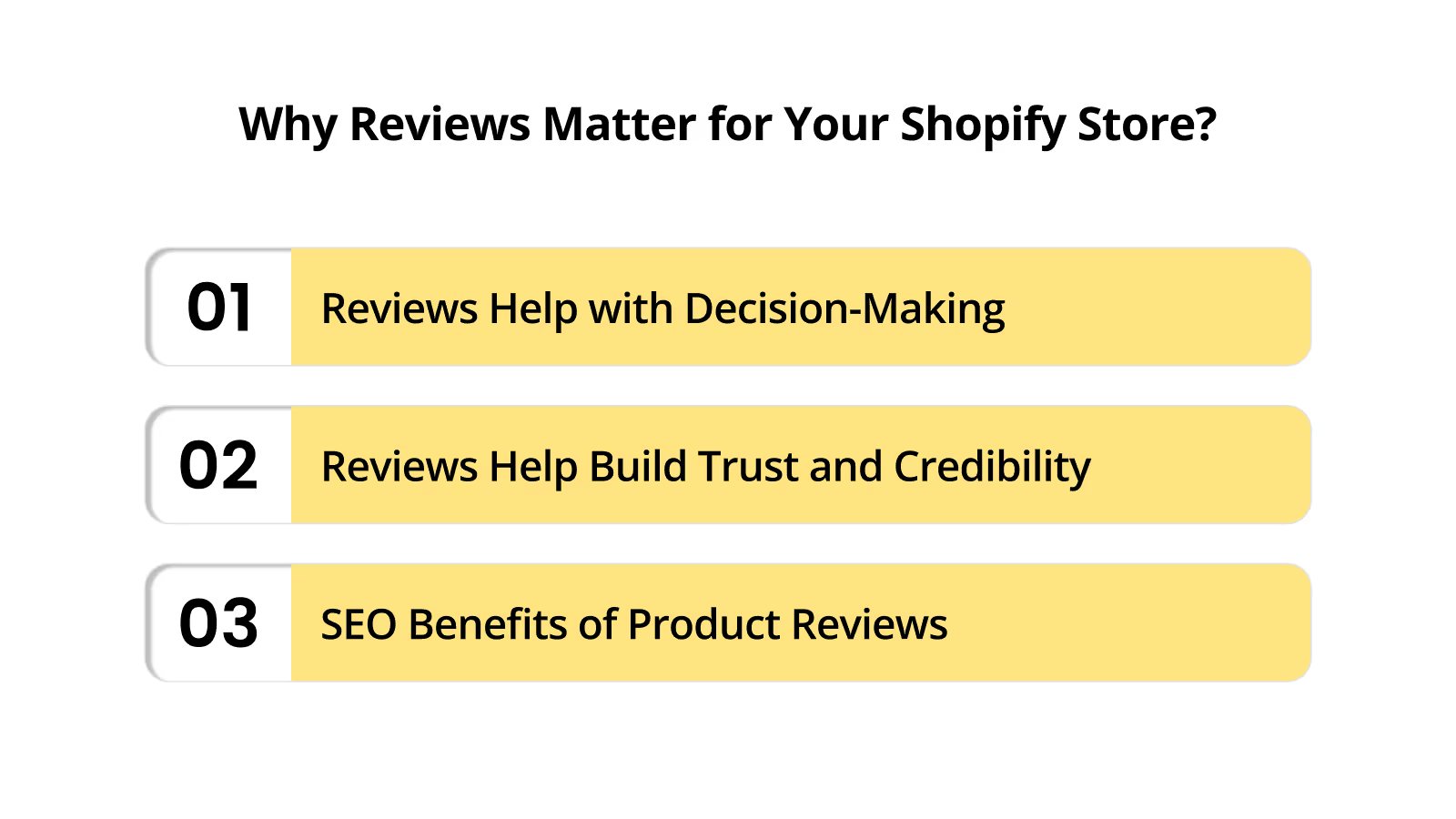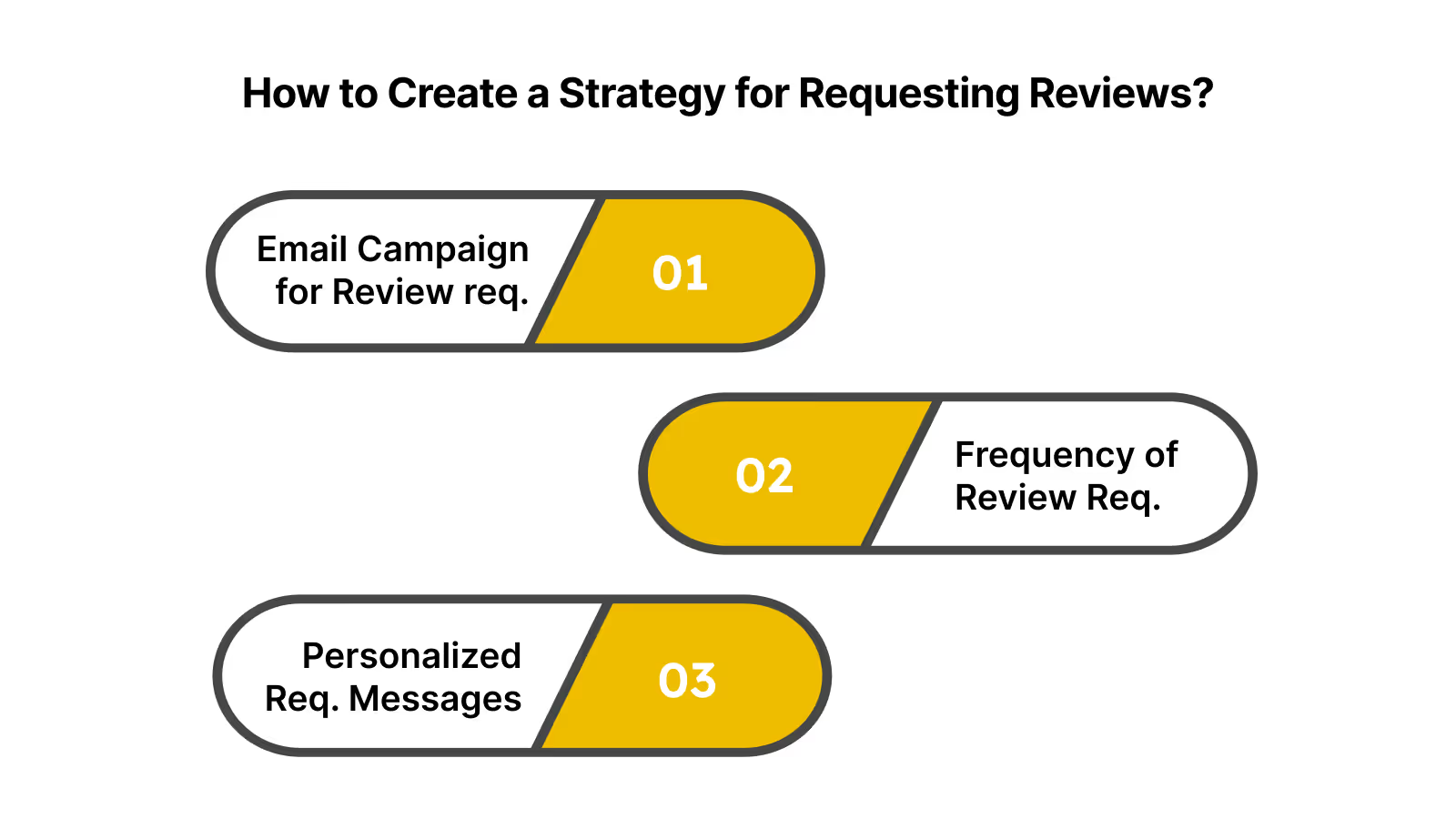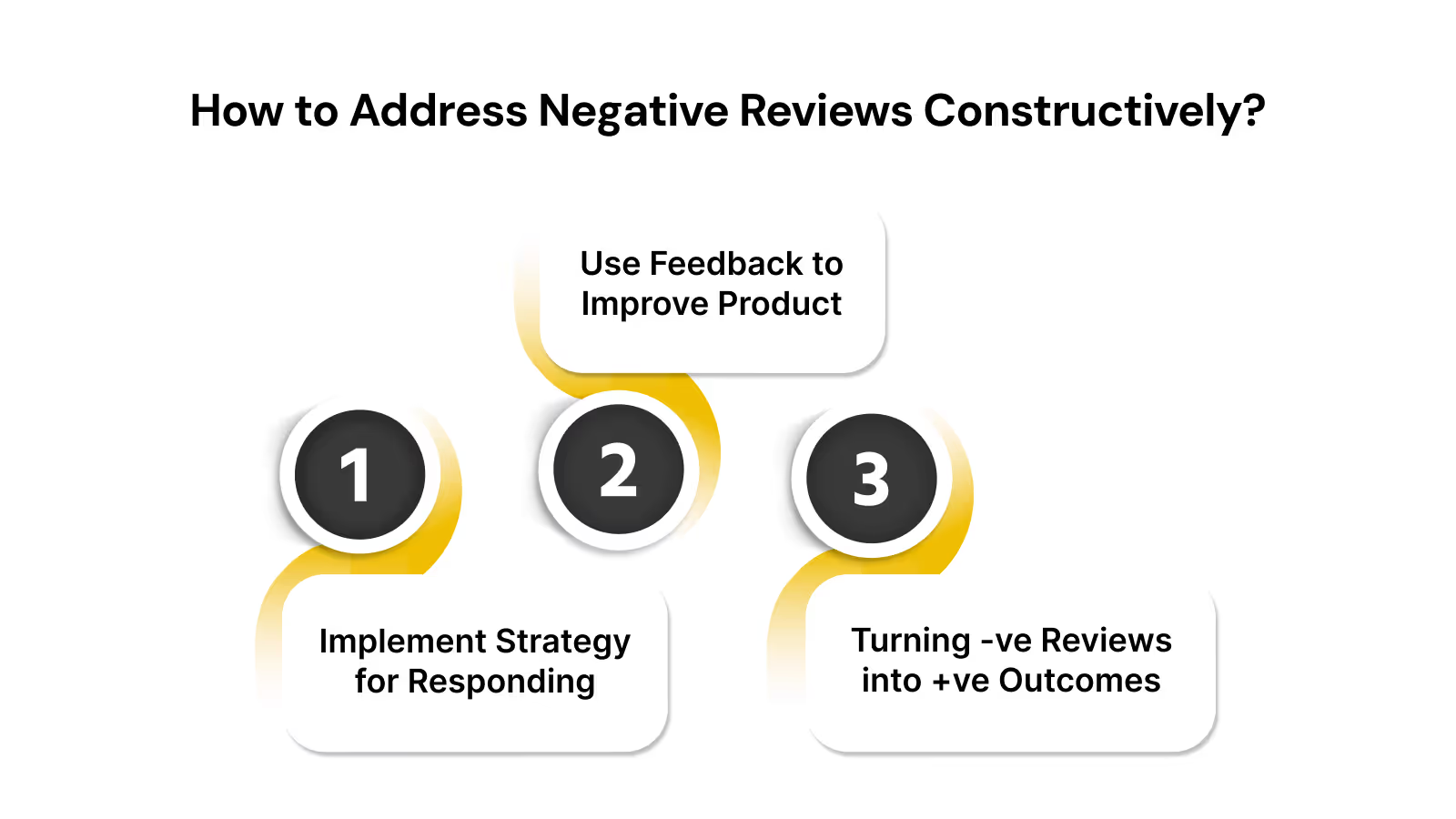.avif)
.avif)
Customer reviews are a key asset for any Shopify store; they build credibility, increase trust, and directly impact sales. Their influence goes far beyond surface-level praise. In fact, research shows that 62% of the variance in consumer purchase decisions can be explained by product ratings and reviews, highlighting just how much weight shoppers place on peer feedback.
For Shopify merchants looking to scale, understanding the true value of reviews can help you build a good reputation for your store. It will also attract new customers to your store.
In this blog, we’ll break down why reviews matter, how they shape customer decisions, and what strategies you can use to collect, manage, and use them effectively to grow your store.
Key Takeaways
- Product reviews build trust and influence purchasing decisions by providing social proof of product quality.
- Automating review requests streamlines the feedback process and saves valuable time for store owners.
- Offering incentives like discounts encourages reviews, but should be balanced to ensure genuine, unbiased feedback.
- Acknowledging both positive and negative reviews shows customers you value their input, strengthening loyalty and encouraging ongoing engagement.
- Reviews boost SEO by adding fresh, keyword-rich content, improving your store’s search engine visibility.
Why Reviews Matter for Your Shopify Store?

Product reviews are important for e-commerce success, building trust, influencing purchases, and enhancing brand credibility. They serve as social proof and play a pivotal role in customer decision-making. But what exactly makes them so valuable for Shopify stores?
1. Reviews Help with Decision-Making
Customer reviews influence buying decisions more than many store owners realize. Today, 49% of shoppers trust online reviews as much as personal recommendations. When potential buyers browse your Shopify store, they often rely on feedback from other customers to validate their purchase. They are incredibly important because:
- Reviews help customers gauge the product's quality.
- It provides insights beyond product descriptions, making the decision-making process easier.
- Positive reviews help foster trust, while negative reviews provide transparency, which is important for brand credibility.
2. Reviews Help Build Trust and Credibility
Building trust with online shoppers can be a challenge, especially in a space where customers can’t physically interact with the products. Reviews bridge this gap by offering real-life experiences from customers who have already made purchases. This further helps as:
- Customers trust reviews that reflect honest opinions.
- A large number of positive reviews helps reassure new buyers of your product’s credibility.
3. SEO Benefits of Product Reviews
Beyond the immediate trust-building benefits, product reviews also provide an SEO boost. Search engines love fresh, relevant, and user-generated content, and reviews tick all the right boxes. Here’s how they provide SEO advantages:
- Reviews add relevant, keyword-rich content to your product pages.
- Positive reviews improve organic rankings and visibility.
- Reviews keep your product pages updated regularly.
Also Read: 2025 DTC Trends: How Shopify Brands Can Stay Ahead with Loyalty and Retention
How to Utilize Shopify Features for Collecting Reviews?
Shopify offers various tools and features to simplify the process of collecting reviews. From built-in functionalities to integrations with third-party apps, these tools can streamline the process and maximize your review collection efforts.
1. Utilizing Shopify’s Built-in Review Request Functionality
Shopify offers a built-in review request feature that allows you to send automated requests to customers after they’ve made a purchase. This feature simplifies the process of requesting feedback, making it easy for you to collect reviews without additional effort.
You must, however, ensure that it is set up to trigger shortly after the product has been delivered. Timing matters as delaying your request for feedback can lead to missed chances and fewer reviews. By automating review requests, Shopify makes it simple for you to get the ball rolling on gathering valuable customer feedback.
2. Integrating Shopify Review Apps and Extensions
While Shopify’s native review features are useful, many store owners turn to third-party review apps to enhance functionality and provide additional features. Apps like Nector offer advanced customization, photo and video reviews, and automated review requests, helping store owners collect more authentic feedback and increase engagement.
With Nector, you can seamlessly integrate reviews into your Shopify store, boost trust with real-world customer visuals, and drive conversions with incentivized review programs, all while ensuring scalability as your store grows.
3. Setting up Automated Review Requests Post-Purchase
Automating review requests assists Shopify store owners looking to maximize review collection. Post-purchase emails should be sent shortly after the product has been delivered, ensuring that customers are prompted to leave feedback while the experience is still fresh in their minds.
In addition to email automation, you can integrate SMS reminders and push notifications. Having multiple touchpoints ensures that customers don’t forget to leave a review. These reminders can also be personalized based on customer behavior, product type, or the customer’s purchase history.
How to Create an Effective Strategy for Requesting Reviews?

Simply collecting just reviews isn’t enough. Having a well-thought-out strategy for requesting reviews can greatly boost both the number of responses and the value of the feedback you receive. Let’s check out how you can do that, the right way!
1. Email Campaigns for Review Requests
Email continues to be one of the most powerful channels for soliciting reviews from customers. You must create personalized, well-crafted email campaigns that remind customers to share their feedback.
Additionally, you can even ease the process by providing a direct link to the review page, making it easy for customers to leave feedback. Don’t forget to segment your email list to target recent customers who are more likely to leave a review, increasing the chances of a positive response.
2. Timing and Frequency of Review Requests
The timing of review requests is just as important as the content. Send review requests within 7–10 days of product delivery to ensure the customer has had sufficient time to experience the product. However, avoid bombarding customers with too many requests. Too many follow-up emails can create a negative customer experience.
It’s also important to test the frequency of requests. A follow-up email a few days after the initial request can remind customers who may have missed it without coming across as too pushy.
3. Creating Persuasive and Personalized Request Messages
Your review request messages should be short, respectful, and personalized. Avoid generic, automated-sounding requests and tailor your messaging to make the customer feel valued. Thank them for their purchase and let them know how their feedback helps your business improve.
If appropriate, consider using customer names and referencing their recent purchases. Personalizing your review requests is helpful for engaging customers and boosting the chances of receiving feedback.
How to Offer Incentives to Encourage Customer Reviews?
Incentivizing reviews is an effective way to increase feedback, but it must be done strategically to avoid inflating the quality of reviews.
1. Deliver the Right Types of Incentives: Discounts, Coupons, and Loyalty Points
Offering incentives like discounts, coupons, or loyalty points is an effective way to motivate customers to leave reviews. Platform like Nector enables e-commerce businesses to enhance customer engagement by integrating loyalty programs that reward customers for their actions, such as purchases, referrals, social media engagement, and reviews. These incentives should be seen as a thank-you for taking the time to share feedback, rather than a payment for positive reviews.
2. Balancing Incentives to Avoid Fake Reviews
While offering incentives can be powerful, it's important to balance them to prevent customers from leaving fake or biased reviews. Ensure that the incentives are for honest feedback and don’t force customers to leave only positive reviews. Implement terms and conditions that make it clear that incentives are given for all genuine reviews, whether positive or negative.
3. Communicating Incentives Clearly to Avoid Misunderstandings
Clear communication is important when offering incentives. Ensure your customers understand exactly how they can redeem their rewards, including digital rewards, and clarify that the incentive is for leaving a review rather than for writing a specific type of review. Transparency helps maintain the authenticity of the reviews and builds trust with customers.
By offering incentives thoughtfully and transparently, you can encourage genuine customer reviews that build trust, and the next step is to amplify these reviews through social media for greater reach and engagement.
Also Read: How to Use Incentives for Engaged Customers to Drive Loyalty?
Choose Social Media to Engage Customers

Social media offers an effective channel to gather and display customer reviews, helping you expand your audience and strengthen credibility. Here’s how you can do it wisely:
1. Encouraging Social Media Reviews and Shares
Invite your customers to share their feedback on platforms like Instagram, Facebook, or X (formerly Twitter) to boost visibility and engagement. Social media reviews reach a broader audience, building your brand’s visibility. You can also craft engaging content that motivates customers to leave reviews and spread the word about their experience.
2. Utilizing Influencers to Broaden Reach
Partnering with niche influencers can help boost the number and visibility of customer reviews. Influencers can highlight their experience with your products, leading to more reviews and higher engagement. By utilizing trusted voices, you can reach new customer segments and gain credibility in the process.
3. Analyzing Social Media Feedback for Improvements
Social media is also a rich source of feedback. Just gathering reviews isn’t enough. Analyze reviews and comments on platforms like Instagram and Twitter to gain insights into customer perceptions. Use this feedback to make improvements to your products or services.
Once you’ve gathered valuable feedback through social media, the next step is to effectively manage and showcase these reviews on your Shopify store to maximize their impact.
Handling and Displaying Reviews on Your Shopify Store
One of the most important parts of the review process is how you display and manage reviews on your store. Selecting the right format and placement, highlighting positive reviews, and responding to each one of them can all help!
1. Selecting the Right Format and Placement for Reviews
Choose the right format for displaying reviews on your product pages, whether it’s a star rating, written feedback, or both. Position reviews prominently on product pages where they’re easy to find but don’t overwhelm the page’s design.
2. Highlighting Positive Reviews to Drive Conversions
Highlight positive reviews by showcasing them in special sections or featuring them in product descriptions. Positive reviews act as social proof, driving higher conversions and making your products more attractive to potential customers.
3. Responding to Reviews to Show Customer Appreciation
Responding to reviews is a powerful way to show customers that you value their feedback. Acknowledge positive reviews and offer solutions or apologies for negative ones. Engaging with your customers can turn a simple review into a lasting relationship.
Also Read: Mastering Referrals and Reviews: How Shopify Brands Can Skyrocket Sales and Loyalty 2025
How to Address Negative Reviews Constructively?

Negative reviews are bound to happen, but the way you respond can shape customer perceptions and influence their decision to stick with your brand.
1. Implement Strategies for Responding to Negative Feedback
Respond to negative reviews promptly and professionally. Acknowledge the concern, express empathy, and provide a clear solution whenever you can. Showing that you care and are willing to correct mistakes can turn a negative review into a positive one.
What you must do:
- Acknowledge the issue: Always accept responsibility where needed.
- Offer solutions: Provide clear steps for resolving the issue.
2. Using Feedback to Improve Products and Services
Use critical feedback as a tool to enhance your offerings and align more closely with what your customers need. If you see recurring complaints, it’s a sign that changes may be necessary. Always keep an open mind to customer feedback and continuously improve.
What you must do:
- Address issues: Improve product quality based on feedback.
- Iterate based on feedback: Use negative reviews to shape your product development.
3. Turning Negative Reviews into Positive Outcomes
Negative reviews can be an opportunity to re-engage customers. Responding with care and providing solutions can transform unhappy customers into loyal advocates. Offering refunds, exchanges, or discounts for future purchases can win back customer trust.
What you must do:
- Offer compensation: Provide refunds or exchanges if necessary.
- Turn feedback into loyalty: Use negative experiences to build loyalty by resolving them effectively.
By addressing negative reviews thoughtfully, you not only resolve individual issues but also strengthen your brand’s credibility. The next step is to monitor and analyze all review activity to continuously refine your approach and boost customer satisfaction.
How to Monitor and Analyze Review Performance?
You must regularly review and improve how your store manages customer feedback. Use tools, identify patterns, and adjust your strategy for building a good reputation for your Shopify store.
1. Using Analytics Tools to Track Review Engagement
Use Shopify’s built-in analytics or third-party tools to track how customers engage with your reviews. This data can help you identify areas where improvements are needed.
2. Identifying Patterns and Trends in Customer Feedback
Track patterns in reviews over time to see common themes or concerns. Addressing these proactively will help reduce negative reviews and improve the customer experience.
3. Adjusting Your Strategy Based on Performance Data
Use the insights from your review performance data to adjust your review collection strategy. If you notice a drop in review volume or engagement, consider revisiting your incentives or email campaigns to encourage more participation.
With review performance insights in hand, you can now use them to strengthen customer trust and showcase authentic feedback with Nector.

Utilizing customer reviews effectively is one of the most impactful ways to build credibility and drive sales for your Shopify store. Nector simplifies the review process for your Shopify store, helping you gather, manage, and display authentic customer feedback with ease. By automating post-purchase review requests, Nector ensures you never miss an opportunity to collect valuable customer insights.
Seamlessly integrate Nector’s review widgets on your product pages to showcase real-time feedback. Highlight top testimonials to drive trust and boost conversions. Additionally, encourage customers to leave richer content, such as photos and videos, enhancing social proof and engagement.
Start building trust and boosting your sales today with Nector's automated review solution. Sign up now!
Wrapping Up
Product reviews are powerful tools for your Shopify store. They help build real trust, boost conversions, and show new customers that your brand delivers. When you actively collect, manage, and respond to reviews, you're not just gathering feedback; you’re creating a two-way conversation. One that helps you improve, connect, and grow.
So don’t treat reviews as an afterthought. Use them to shape a brand people come back to; not just for what you sell, but for how you listen.
Additionally, with Nector, enable customer reviews on your Shopify store and unlock stronger social proof and brand trust. Book a demo now to see how it works.
FAQs
What are the most effective ways to encourage customers to leave reviews?
Encourage reviews by sending timely, polite follow-up emails after purchase, offering excellent customer service, and making the review process simple and quick. Personalizing requests and highlighting how reviews help improve the store also motivates customers to share their feedback.
How can I automate review requests without annoying my customers?
Set up automated review reminders that send a friendly request a few days after delivery. Keep messages brief and respectful, and avoid frequent follow-ups to maintain a positive customer experience.
What should I do if I receive a negative review?
Respond promptly and professionally, acknowledging the customer's concerns and offering to resolve the issue. Use negative feedback as an opportunity to improve your products or services and demonstrate your commitment to customer satisfaction.
How do customer reviews impact my Shopify store’s sales and credibility?
Reviews build trust by showing real customer experiences, which can increase conversions and reduce purchase hesitation. Positive reviews improve your store’s reputation, while honest feedback helps you identify areas for improvement.
Start Building Customer Retention That Lasts









